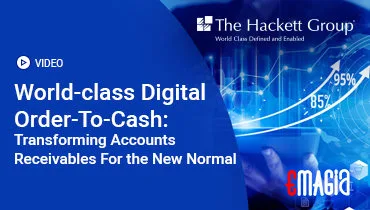Introduction
In the realm of financial management, businesses often extend credit to customers, anticipating timely repayments. However, not all debts are recoverable. Understanding when an account becomes uncollectible is crucial for accurate financial reporting and maintaining fiscal health. This piece examines the complexities surrounding uncollectible accounts, including their underlying causes, methods of detection, accounting approaches, and ways to minimize their impact.
Understanding Uncollectible Accounts
What Is an Uncollectible Account?
An uncollectible account, commonly referred to as bad debt, represents a receivable that a business deems unlikely to be collected due to various reasons such as customer insolvency or disputes. Accurately recognizing these accounts ensures that a company’s financial statements reflect its actual financial condition.
Difference Between Bad Debt and Doubtful Accounts
- Bad Debt: Amounts confirmed as uncollectible and written off.
- Doubtful Accounts: Receivables that might become uncollectible in the future, requiring estimation and provision.
Importance of Recognizing Uncollectible Accounts
Timely identification of uncollectible accounts prevents overstatement of assets, ensures compliance with accounting standards, and aids in making informed credit decisions.
Causes of Accounts Becoming Uncollectible
Common Reasons
- Customer Bankruptcy: Legal insolvency proceedings hinder debt recovery.
- Financial Difficulties: Customers facing economic hardships may default.
- Fraudulent Activities: Intentional deception leading to non-payment.
- Disputes Over Goods/Services: Quality or delivery issues causing payment refusals.
- Ineffective Collection Efforts: Lack of follow-up or inadequate credit control mechanisms.
Industry-Specific Factors
Certain industries, like construction or retail, may experience higher bad debt ratios due to the nature of transactions and customer base.
Indicators of Potential Uncollectibility
Warning Signs
- Consistent Payment Delays: Regular late payments signal financial strain.
- Communication Breakdown: Unresponsive customers may be avoiding payment discussions.
- Negative Credit Reports: Deteriorating credit scores indicate increased risk.
Monitoring Tools
Implementing credit monitoring systems and regular account reviews can help in early detection of potential bad debts.
Accounting for Uncollectible Accounts
Direct Write-Off Method
Under this method, bad debts are recognized only when deemed uncollectible. While simple, it may violate the matching principle by not aligning expenses with revenues.
Allowance Method
Preferred under Generally Accepted Accounting Principles (GAAP), this method involves estimating uncollectible accounts at the end of each period, ensuring expenses match the revenues they help generate.
Estimation Techniques
- Percentage of Sales Method: Applying a fixed percentage to total sales to estimate bad debts.
- Aging of Accounts Receivable: Categorizing receivables based on age and applying different percentages of uncollectibility.
Legal and Tax Implications
Legal Considerations
Eliminating unpaid debts from the books can have legal consequences, particularly when the debtor contests the obligation. Maintaining thorough records and following the appropriate legal steps is crucial.
Tax Treatment
In many jurisdictions, bad debts can be deducted for tax purposes, provided they meet specific criteria, such as being previously included in income and being wholly or partially worthless.
Strategies to Minimize Uncollectible Accounts
Credit Policies
Establishing stringent credit evaluation processes helps in assessing customer creditworthiness before extending credit.
Collection Procedures
Implementing systematic collection strategies, including reminders and follow-ups, increases the likelihood of debt recovery.
Customer Relationship Management
Maintaining open communication channels and fostering strong customer relationships can preempt payment issues.
How Emagia Enhances Accounts Receivable Management
Emagia provides cutting-edge tools designed to optimize and simplify the management of accounts receivable:
- Automated Credit Risk Assessment: Utilizing AI to evaluate customer credit profiles.
- Predictive Analytics: Forecasting potential defaults to take proactive measures.
- Integrated Collection Workflows: Automating follow-ups and payment reminders.
- Real-Time Reporting: Providing insights into receivables and potential risks.
Utilizing Emagia’s solutions enables organizations to lower the frequency of bad debts and improve their overall cash flow.
Frequently Asked Questions
What defines an account as uncollectible?
An account becomes uncollectible when all reasonable collection efforts have failed, and there’s a high certainty that the debt will not be recovered.
In what ways is the allowance method distinct from the direct write-off approach?
The allowance method estimates bad debts in advance, aligning expenses with revenues, while the direct write-off method records bad debts only when they are confirmed uncollectible.
Can bad debts be recovered after being written off?
Yes, if a payment is received after a debt has been written off, it’s recorded as a recovery in the financial statements.
How can businesses reduce the risk of uncollectible accounts?
Implementing strict credit evaluations, maintaining regular communication with customers, and employing effective collection strategies can mitigate the risk.
Are there tax benefits to writing off bad debts?
In many cases, businesses can claim tax deductions for bad debts, provided they meet specific regulatory requirements.
By understanding the nuances of uncollectible accounts and implementing robust credit and collection practices, businesses can safeguard their financial health and ensure sustainable operations.


